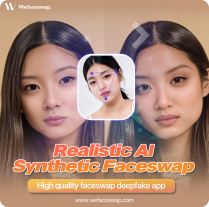AI Face Swap Tools: What You Need to Know
AI Face Swap Tools: What You Need to Know
Blog Article
The Evolution of Face Swap and Its Rising Popularity
The change of experience change engineering from a unique novelty to a popular tendency is nothing short of fascinating. Originating as a great filter on early image apps, face trades have today become an intrinsic part of social networking material creation and also skilled industries. With its quick progress and climbing recognition, deepfake (딥페이크) technology has fascinated thousands worldwide. Systems like Experience Change have played a significant role in this phenomenon, giving advanced and modern face swapping methods which are simple to use.

Deepswap is just a cutting-edge strong learning technology which allows for top quality face swaps with just a couple of clicks. It employs artificial intelligence (AI) formulas to analyze facial characteristics and easily change them with still another person's. It has opened an environment of creative possibilities, enabling customers to produce jaw-dropping aesthetic outcomes and unique content. Let's explore some of the exciting jobs you possibly can make with Deepswap.
The Early Days of Experience Change
Face swap engineering first seemed in the early 2010s with fundamental photo-editing apps. These early iterations were usually clunky, making hilarious but glitchy effects that fueled its appeal solely as entertainment. People might exchange encounters with buddies, animals, or even celebrities, sharing these amusing pictures on social media platforms. While standard, that entry-level engineering exposed the entranceway for designers to investigate its untapped potential further.
Development Propelled by Cultural Press
Rapidly ahead to the mid-2010s, and the increase of apps like Snapchat and Instagram catapulted experience trades into conventional culture. The thing that was when limited to static images was now being converted into real-time movie filters. FaceSwap, Snapchat's renowned lens, turned among their most widely used characteristics, participating countless consumers daily. Reports declare that by 2016, about 60% of Snapchat users had attempted their experience exchange function at the least once.
Simultaneously, social media marketing influencers began adopting face trades for content formation, heightening wedding through imagination and humor. That growing trend further cemented the technology's existence in common culture, planning beyond amusement and emerging as a powerful instrument for storytelling.
Sophisticated Technology and Broader Programs
Today, improvements in artificial intelligence (AI) and device learning have enhanced face trade resources, making them more precise and effective than their predecessors. Deepfake engineering presents the cutting-edge sphere of experience sharing, allowing hyper-realistic overlays of one face onto another. Beyond activity, professional fields like filmmaking, advertising, and also virtual knowledge have embraced these innovations.

As an example, in 2021, reports suggested that nearly 15% of digital marketers were trying out AI-driven movie personalization using sophisticated experience swaps. That shift demonstrates how face trade technology is crossing into practical purposes, pushing their rising popularity.
A Development on the Increase
Why is face trades evergreen is their convenience and adaptability. Thanks to mobile-friendly apps driven by AI, anyone can test out experience swaps without specialized expertise. Whether for lighthearted fun or skilled use, the growth of the technology suggests extended growth.
From its simple origins as a photo-editing uniqueness to their modern-day purposes in AI and marketing, experience trade technology has developed remarkably. With further developments coming, this tendency is set to keep up their popularity for decades to come.
Report this page